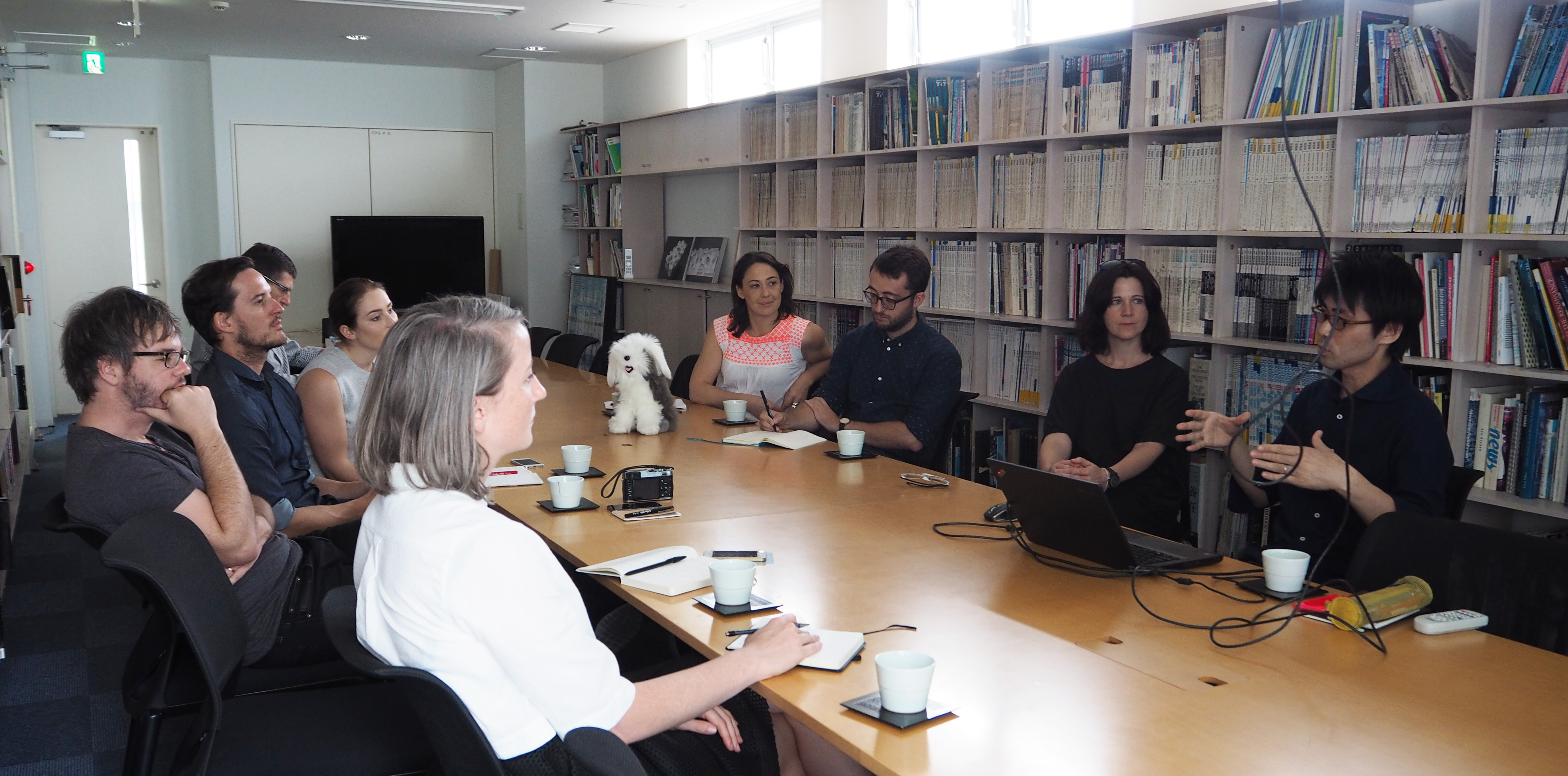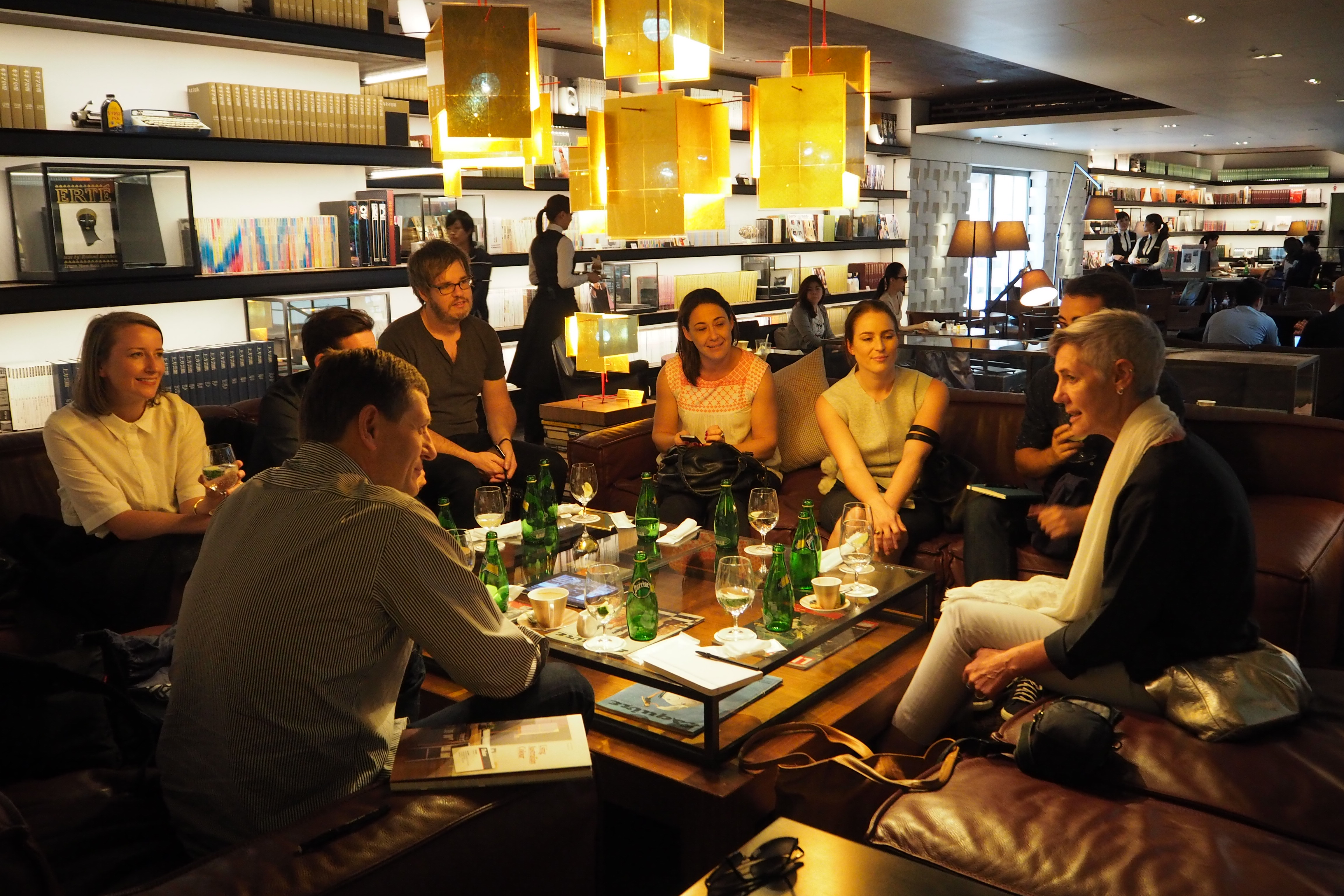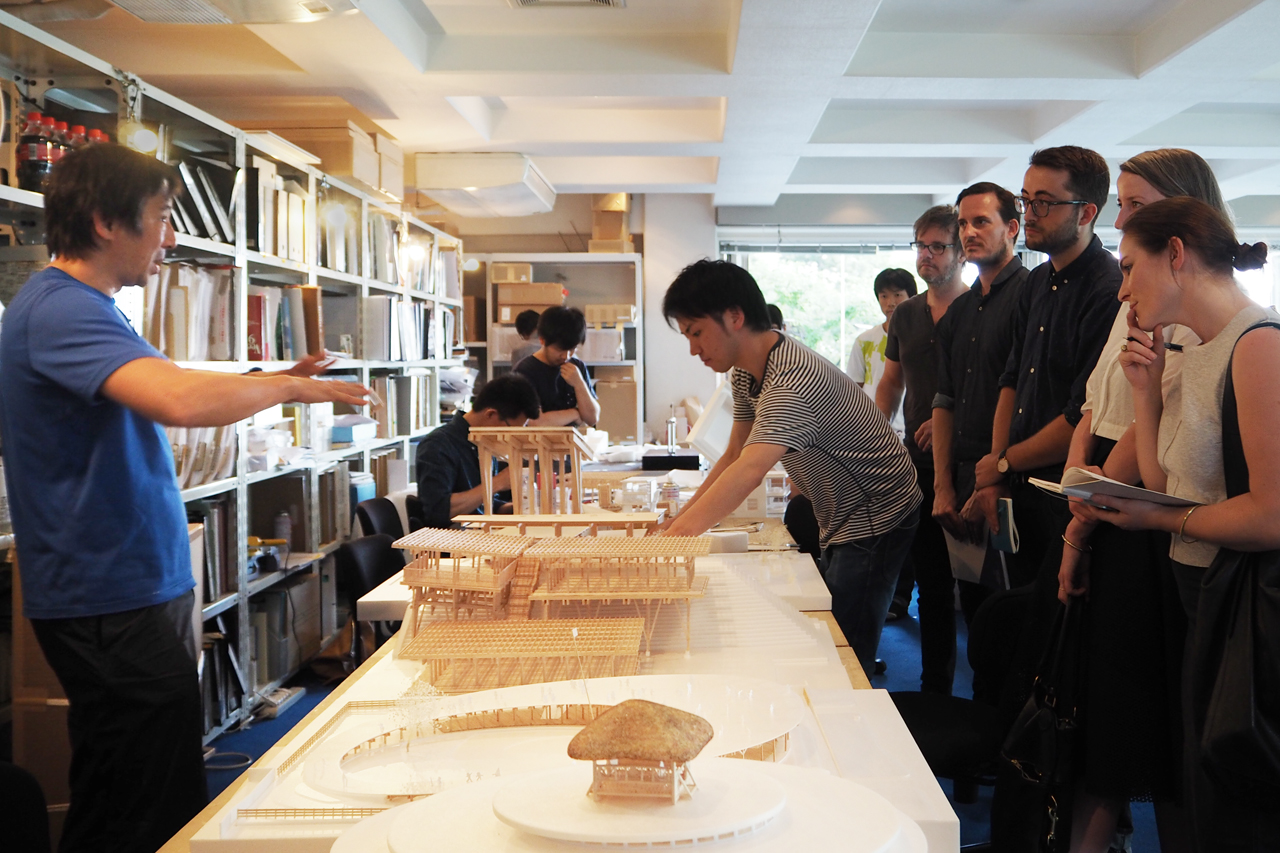The third and final round of our starchitect-struck adventure in Tokyo kicked off with a clash in practice culture. At the unadorned offices of Fujimoto north of Shinjuku station, the administrative staff took us on a tour of the open plan space before a carefully worded Q&A.
Immediately it is clear that model making is key to the success of the international practice, as are the unpaid interns who assemble them. Passing through a procession of pin-up boards populated with site photographs, diagrams and renders awaiting Fujimoto-san’s review, we are reminded of our time as students; the fear and fervour of production and assessment. Piled high with boxes and strewn with paper, the stark and raw former printing warehouse is sacrificially devoted to delivering the sketch of the master sculptor.
Work typically starts at 10am in Tokyo and consistent with its reputation, hours are only really limited by the last train.
From Fujimoto to the annex office of Toyo Ito and Associates, there is a notable shift to a more established office culture of collaboration, evolution, and fostering staff potential. With genuine enthusiasm and an impressive slide show, Ito-san’s Associate Kenta-san, explains that here design occurs through conversation with the provocatively mysterious Ito-san, who as master, guides and encourages his staff to deliver each project.
Their work is ambitious and sculptural, but is now more focused on civic contribution, consideration toward sustainable design, and promoting national pride at a truly epic scale. That said it seems for Kenta-san that the tight relationship between nationality and the architect during times of economic boom now needs to shift toward helping out the community. Hinting that the practice future will involve temporary housing for tsunami affected Japan after the 2011 Toūhoku quake – watch this space!
Refreshed by Kenta-san’s candid practice summary and a brief café stop, we moved in to the office of Pritzker Archtecture Prize winner, 87-year-old Fumihiko Maki. Up to fifty staff occupy the lower levels of one of their own developments in Shibuya.
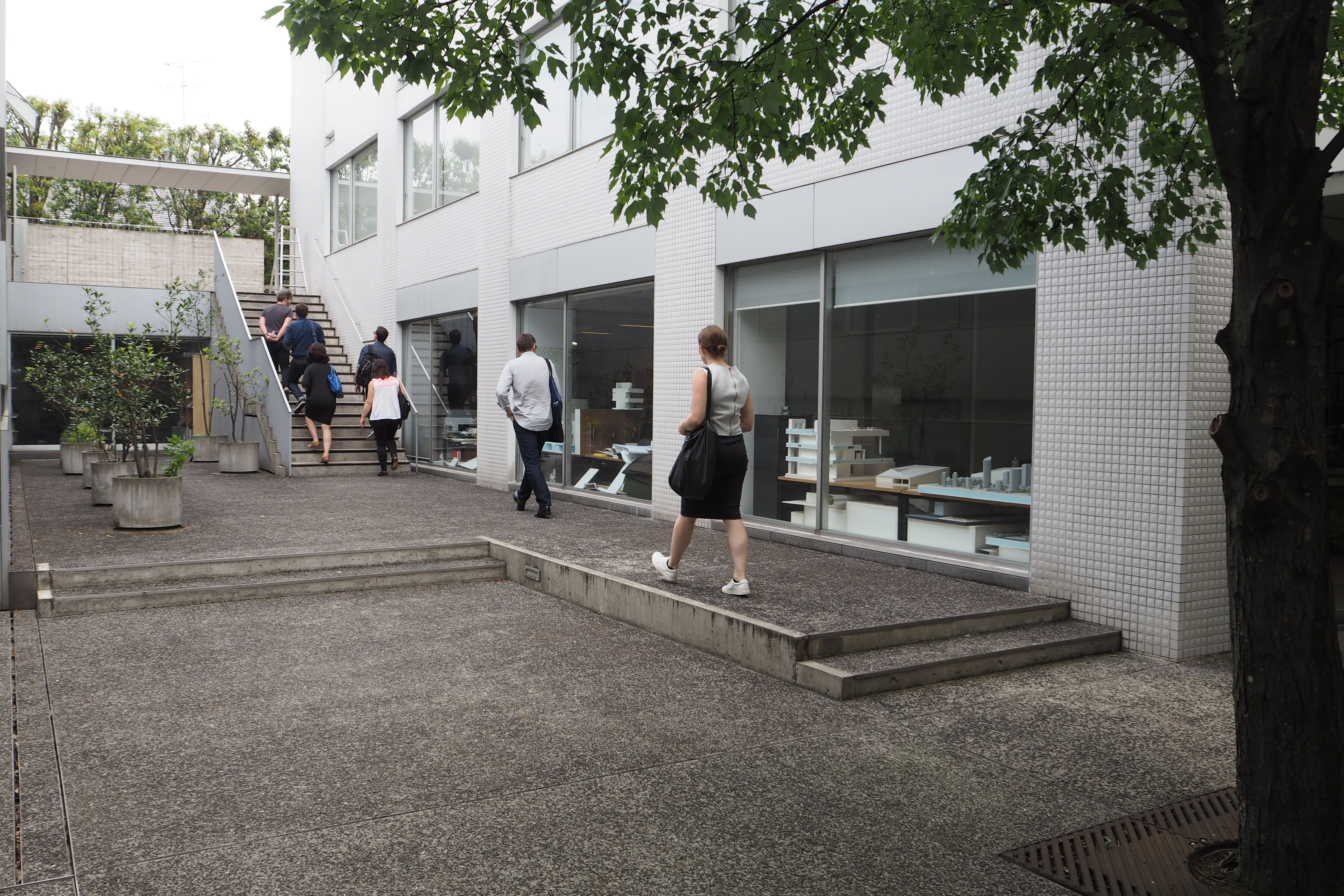
Surrounded by courtyards and vegetation, the office is crammed with predominately urban scale card models that our practice guide and practice associate Michael used to describe their recent commercial projects largely located abroad.
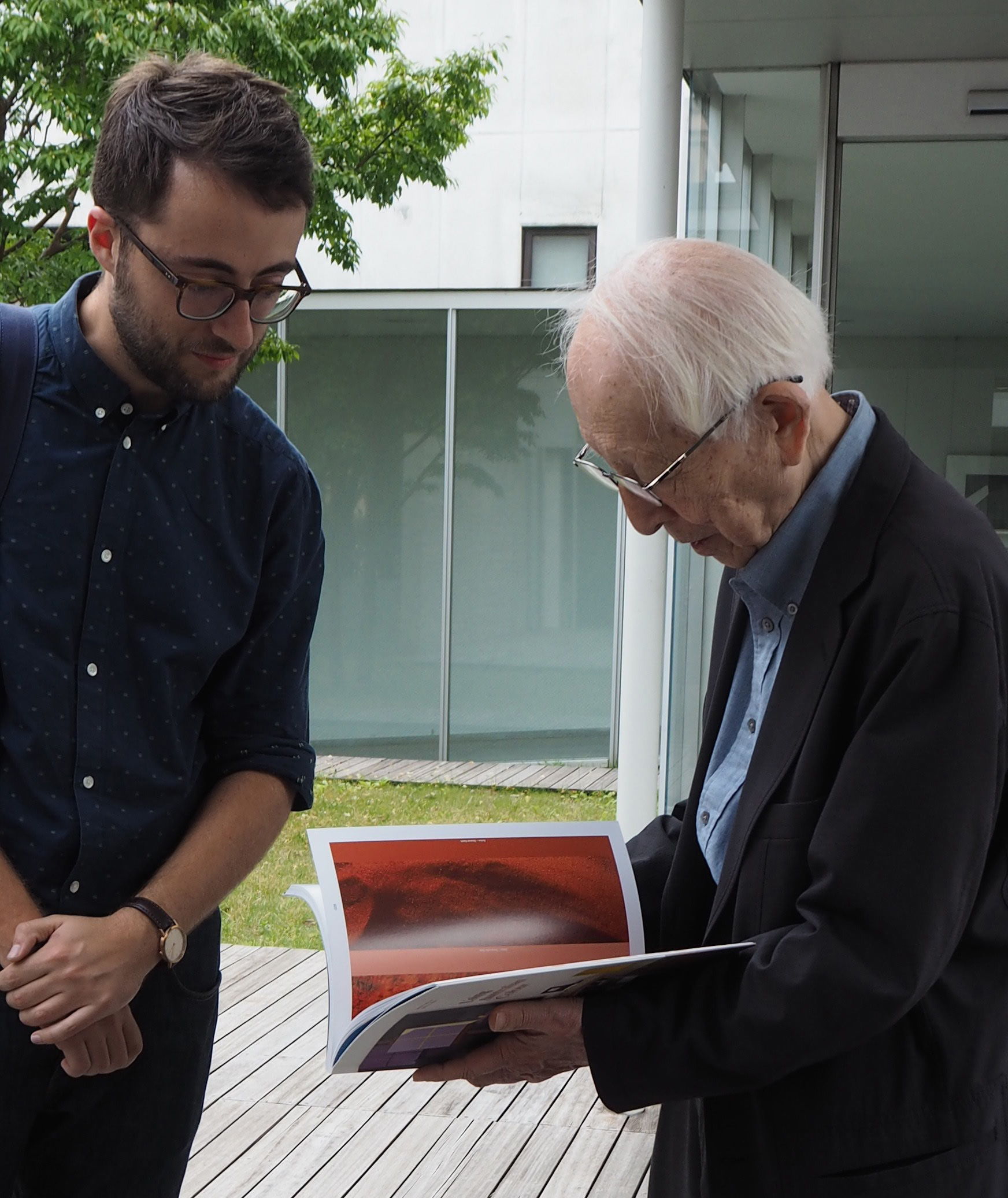
Our media contingent, Katelin Butler editor of Houses, was more than chuffed to see several of their publications lining their display shelves and we were all grinning by the end of our visit after a brush with the white-haired, still poised Maki-san himself.
Next, a short walk took us to the T-Site in Daikanyama where we met the well-composed Astrid Klein of Klein Dytham Architects.
Relaxing in the Anjin Lounge on the first level of her project, discussing its procurement process that had occurred amid the last major earthquake disaster, when “talk of the devil”; we were in the grips of a 5.6 quake. Guiding us to the strongest point in the building to wait it out, we were most certainly in the best of hands. Thankfully our jelly-legs and shaking hands subsided and we were able to resume our conversation and tour, albeit with a distinct focus on designing for the unfamiliar, unpredictable land we were standing on.
This voice recording captures the moment the earthquake hit.
Onward south through the city by train, we completed the practice tour with the architect of the project that our Dulux Study Tour began with. Standing in slippers at Tezuka Architects, we were able to survey the workspace that was divided into balsa model making and CAD stations.
Tezuka-san and his team were eager to describe their process through models, where models come first, and drawing second. With a tangible bent toward social sustainability and notable mastery of engineered design solutions responding to our scarily active moving earth, we were impressed with how the practice differed from those before it.
The five practices were all very different, and now somewhere between Tokyo and London, it is incredible to reflect on the varied involvement and manner of the master architect, their workspaces and rigor of physical model making.
To wrap up the day of practice visits and a whirlwind three days in Tokyo, we headed out to an izakaya in Ginza to cap it off with some sake.
A special thanks must go to our chief navigator, John Ellway for efficiently weaving us through the crowds and weblike rail network making sure we kept good time.
– Bonnie Herring
